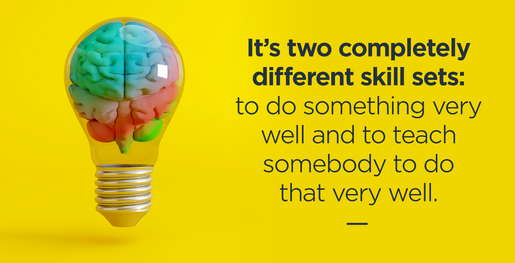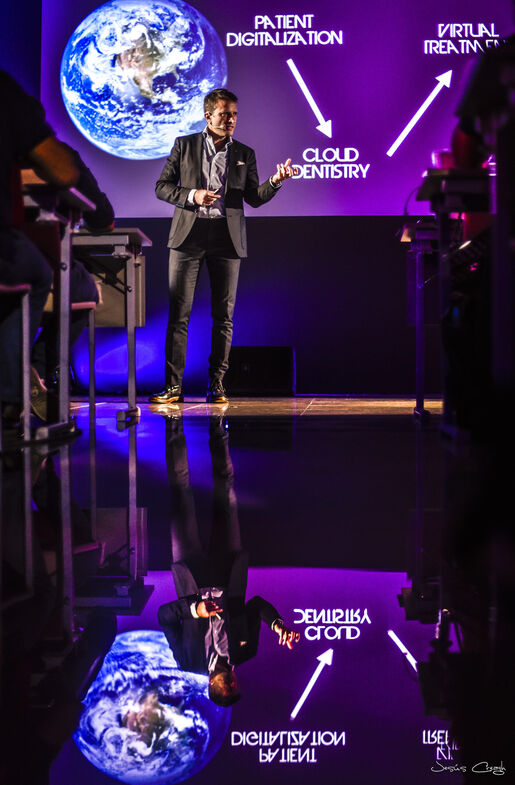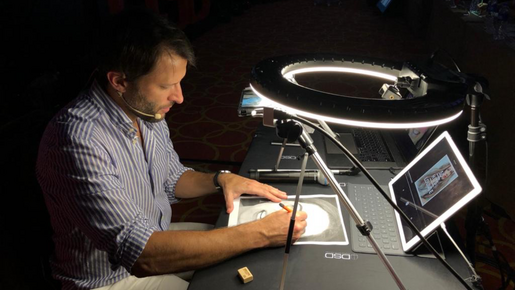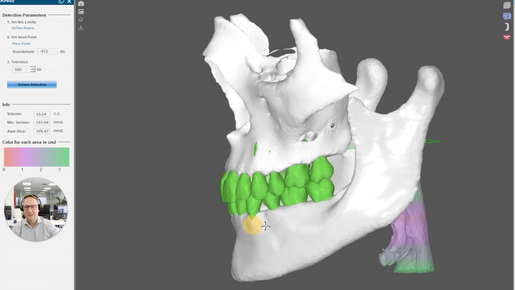
By Digital Smile Design
⋅ min read
⋅ Updated Jun, 2023

Do you ever wonder why do we do things the way we do? How do we explain the reasons why we think the way we think? If we can understand this, we can become better teachers. If we want to teach the way we do something, just doing something well is not enough to be able to teach others what we are doing. We also need to explore the reason why we do something well -- what is the combination of factors that makes you do something well? Why does your brain allow you to do something well, perhaps better than others?
Exploring the process of excellence
Whenever I am achieving a certain level and doing something very well, for me it is always super exciting to then explore the process that my brain was going through to allow me to do something at that level. What do I mean by this? Let me use diagnostic wax ups as an example. I have always enjoyed doing it and at a certain point in my career, as a technician, I became very good at doing it. But that wasn’t enough for me. I wanted to be able to explain how to do it. To allow other people to do it as well as I was doing, or even better than me, was my goal. I realized that most people who do something very well, are not necessarily great teachers of that same exact topic. It’s two completely different skill sets: to do something very well and to teach somebody to do that very well.
Teaching others to excel
Combining these two skills is really the key to becoming a great mentor, a great teacher, or even to create a business model behind what you do. When you do something very well, your next question should be: how can I grow my team so that I can make money without having to do something with my own hands? How can I allow other people to do what I'm doing to the same level or similar level as I do? So, actually, this thought process is not only for educational purposes, it's for business purposes as well.
When I was doing wax ups, I wanted to create a lab that could do hundreds of wax ups for dentists, at the same level as me but without me having to be at the bench day and night doing it myself. So, I started to develop a system to teach people to see the way I see -- to process in the brain in 3D the way I was doing, and to have the same hand-eye coordination. This needs a system. You need to teach people how to do that and to teach, you need to organize your thoughts.

Encouraging others to think artistically
I started to understand that my brain, for example, had been educated in an artistic way from a very young age. This was the education that my parents gave me, because of the school that I went to (Waldorf). The education system was very open, free, and was always stimulating our creativity, never generating too many rules in the education process at this young age. We have a whole life to follow rules; when you're little you have to follow some social rules but the educational system really destroys our creativity. I was lucky enough to be part of a system that stimulated my creativity.
This created a natural artistic thinking process. When I was in school, I never ever actually saw teeth, never observed teeth. Suddenly when I was 18, I was looking at teeth and then the teacher was giving me a block of wax and asking me to replicate it. At the beginning it was intuitive, it was natural, and I could see that I was doing it easily and most of the students were really struggling and hating the process. So when it comes naturally, it generates pleasure. When you're fighting against yourself, it generates pain, it makes you not want to do it. Now, because it was a pleasure, I started to do it a lot. Of course practicing also makes you better, but something more important in practice is to train your brain. To see in 3D, what I realized is that my brain was fragmenting the teeth into little pieces. To facilitate my 3D understanding, I was breaking the tooth down into little pieces and I was analyzing each little piece individually and then putting the pieces together.
My brain was also connecting these little pieces, like an internal scanner. These little pictures in 3D that allowed me to immediately see something, to look at a 3D tooth in my hand and go to a piece of wax and sculpt a very similar shape in the wax. I started to organize that into an educational process and I started to teach that. I also had, of course, great mentors. For example, my father was always very good with shaping, he was my first mentor in this. The key to being artistic with your hands is not to have great hand skill, it’s to have great eye skill and great brain skill -- the hands are just the consequence. You can only sculpt and perform with your hands what your eyes see and what your brain processes.
Most people who aren't artistic don't know how to sculpt a tooth and if they only practice their hand skills they will never get there. They need to reprogram and reset their brain, reteach their eyes to see in 3D. That's the key to being an artistic dentist. This also key in the Digital Smile Design concept.
Teaching a step-by-step process
We need to not only be good at doing something, but also explore our brain when we are doing something very well and try to understand how our brain works when we’re performing something to a high level. As we analyze the performance of our brain, we need to try to follow the step-by-step process that our brain takes to allow our hands to do something. We need to break it down into steps, step by step in a tutorial, and then we can go to students and not just tell them, ‘This is what you need to do’ but guide them through the process, help them retrain their brain. Usually most people are not naturally artistically gifted, or even in the case of those who were artistic, the educational process probably reduced their artistic skills or creativity. So, we need to wake up the artistic side of the brain. A way to allow more people to be artistic is to teach them step-by-step, taking their brain in your hands and guiding the brain into the process of being artistic once, twice, three times until the person reconnects to the artistic thoughts in the brain and will start doing it alone.
Being a great teacher is about performing something very well and then exploring the reason why you perform very well, organizing what you discovered in an educational way, step-by-step, and then reaching out to students, grabbing them by their hand and guiding them through the process of being creative. It was always interesting for me to see that.

Explaining the decision-making process
I was always very passionate when watching lectures. More than just when analyzing the clinical content, I was passionate about evaluating the skills of the speaker as an educator. How he was able to explain the way he was doing it, not only showing beautiful pictures but actually being able to show a simple procedure and organize slides and words and thoughts in a way that made people able to understand the decision-making process. Explaining the decision-making process is key for educators. If you just show what you did in one, two, three, four steps, that has almost no educational value if you don't organize your thoughts.
I always appreciate the real thought organizers, the guys who are real educators. The guys that can take a complex topic or a simple topic, break it down into a thinking process, bullet points. People who can break down the algorithm of different possibilities and decision-making processes and simplify what is complicated. The people who ensure the audience leaves a 10-minute lecture, a half-hour, one-day, whatever, lecture, with a simple conclusion, with a simple implementation strategy, with a simple take home message. Very few people in the dental world have those skills.
I always appreciate the real ‘thought organizers’, the guys who are real educators. The guys that can take a complex topic or a simple topic, break it down into a thinking process, bullet points. People who can break down the algorithm of different possibilities and decision-making processes and simplify what is complicated. The people who ensure the audience leaves a 10-minute lecture, a half-hour, one-day, whatever, lecture, with a simple conclusion, with a simple implementation strategy, with a simple take home message. Very few people in the dental world have those skills.
I always love to mention the guys I admire who have these skills, the guys that I think are the real ‘thought organizers’: John Kois, Frank Spear, Vince Kokich, Pascal Magne Gerard Chiche, Markus Blatz, Daniel Adolph, Bill Arnett, Rick Roblee, Bill Robbins, Ronald Goldstein, Peter Dawson. Of course I’ll have missed off many names from the list, but these are the guys that really impacted me, the ones whose lectures I saw many times and in whom I could definitely see their skill as teachers. So is Marcelo Calamita my dear partner, we actually learned together how to do this. I hope I was able to help Marcelo a little bit on this topic in return.
I believe we need many more people with these types of skills, not only to show off artistic clinical skills. These are the people that really make the dental world better; they create a lasting impact on people.



